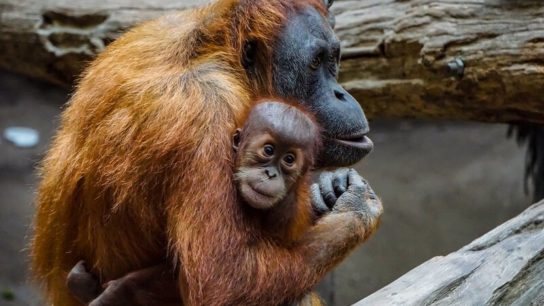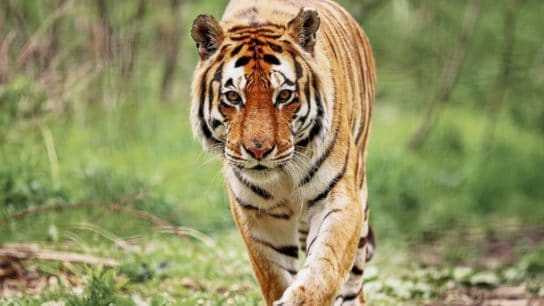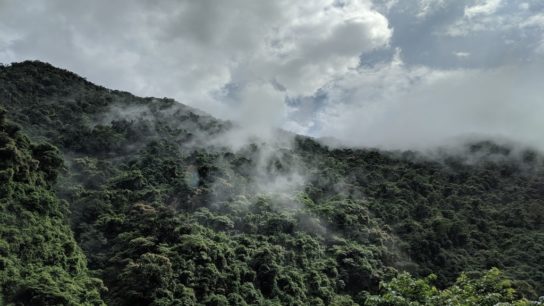Ecotones, also known as transition zones, provide unique environments and resources that foster the coexistence of diverse species.
—
Ecotones refer to transition areas where ecological communities, ecosystems and biotic regions coincide. These zones are rich in biodiversity, acting as vibrant meeting grounds between distinct ecosystems. The intertwining of habitats provides critical space for activities like courtship, nesting, and foraging. Thus, ecotones are not merely boundaries or edges; rather, they embody zones of active interaction between two or more ecosystems, exhibiting unique characteristics that are absent in the adjacent ecosystems.
Ecotones can be loosely categorized into four categories: terrestrial ecotones (boundaries between different land ecosystems, such as forests and grasslands); aquatic ecotones (transitional areas between freshwater and marine environments, like estuaries and wetlands); riparian ecotones (areas along rivers and streams where aquatic and terrestrial ecosystems meet); urban ecotones (also called anthropogenic ecotones, they are interfaces between urban areas and natural landscapes); and vertical ecotones (gradients created by changes in elevation, such as mountain ecosystems transitioning from forest to alpine tundra).

Nurturing Diversity
Often, the species richness and population density in the ecotone is higher than the surrounding ecosystems. This is called the edge effect. Think of estuaries where freshwater rivers meet salty seas, sustaining unique species like mangroves and salt-tolerant organisms. These transitional zones are vital nesting sites for birds, feeding grounds for fish, and nurseries for marine life.
Similarly, marshes at the water-land interface support a diverse array of flora and fauna, including tall cordgrass, cattails, and water lilies, which provide shelter and food for creatures like the threatened wood stork, the endangered American bald eagle, and the majestic alligator snapping turtle. Other species that call marshes home include the migratory osprey, the shy muskrat, and the busy beaver, as well as countless invertebrates like crayfish, snails, and insects that play crucial roles in the ecosystem.
The influence of both freshwater and marine environments creates a dynamic edge effect, fostering a wealth of species not commonly found in either community.
Intertidal zones, which represent the interface between marine and terrestrial environments, are another example of a naturally occurring ecotone. A typical intertidal zone ecosystem is characterized by a diverse array of organisms, including barnacles, mussels, seaweed, sea anemones, and sandworms. This zone is also an important feeding ground for resident and migratory birds. The environment in an intertidal zone constantly changes. The tide’s regular ebb and flow results in rapid fluctuations in temperature, moisture, and salinity, alongside exposure to strong winds and waves.

Climate Resilience and Adaptation
The scientific community considers ecotones as “natural laboratories” for studying a range of evolutionary processes, such as the process by which new species form. This is because, as species adapt to live in transition areas, they exhibit evolutionary traits.
In intertidal zones, organisms have developed unique survival strategies to adapt to challenging conditions. Barnacles and mussels, for example, store seawater in their shells during low tide, which helps maintain internal water balance and prevents dehydration. Physiological adaptations can be seen in periwinkles and anemones, which help them tolerate a wide range of temperatures and salinity levels. Meanwhile, limpets and snails produce heat-shock proteins to protect against thermal stress.
Biologists studying the rainforests of Cameroon discovered that Little Greenbuls that live on the forest edge sing at a pitch different from that of their rainforest counterparts, although both birds are of the same species. The change in pitch, which allows the edge-dwelling birds to overcome ambient sounds that differ from those of the forest interior, influences mate choice and reproductive success. These birds living in the forest ecotone also display notable size differences compared to their rainforest-dwelling counterparts. The Little Greenbuls of the forest edge are heavier, with longer legs, extended wings, and deeper bills – morphological adaptations that provide them with distinct competitive advantages. For example, their elongated wings allow them to evade aerial predators more effectively in the open environment.
Since ecotones support populations adapted to fluctuating and unstable conditions, some scientists believe that this might help ecotonal species survive climate change. As shifts in climate in the boundary regions between ecosystems are expected to be both rapid and extreme, more research needs to be directed towards understanding how ecotones respond.
Human Impacts and Conservation
Habitat fragmentation and changing land use patterns are creating human-made edges, which alter ecological interactions between organisms. While edges can support certain species, they can also expose interior habitats to more sunlight, wind, and invasive species, disrupting the delicate balance of the ecotone. Fragmentation also reduces biodiversity and impairs the evolutionary processes that occur in these dynamic transitional areas. Degraded ecotonal areas need to be restored to re-establish natural habitat conditions and improve connectivity between ecosystems.
Since ecotones are relatively small in size but rich in biodiversity, conservation efforts in these areas might be more efficient and cost-effective.
The Australian government has initiated programs to protect coastal and riparian ecotones such as mangroves and saltmarshes, emphasizing the importance of these areas for biodiversity and as buffers against climate change. The US also has various initiatives in place. An example is the National Estuarine Research Reserve System, which focuses on protecting estuarine ecotones and promoting research and education about their significance. To recover damaged ecosystems, Costa Rica has established biological corridors that connect different ecosystems, including ecotones, to facilitate species movement and preserve biodiversity.
Conservation efforts aimed at protecting and restoring ecotones are essential to mitigating adverse human impacts on ecotones and ensuring the preservation of biodiversity for future generations. By recognizing the importance of ecotones, we can better understand their role in sustaining life and inspire meaningful actions towards their conservation.
Featured image: Bureau of Land Management/Flickr.
This story is funded by readers like you
Our non-profit newsroom provides climate coverage free of charge and advertising. Your one-off or monthly donations play a crucial role in supporting our operations, expanding our reach, and maintaining our editorial independence.
About EO | Mission Statement | Impact & Reach | Write for us














